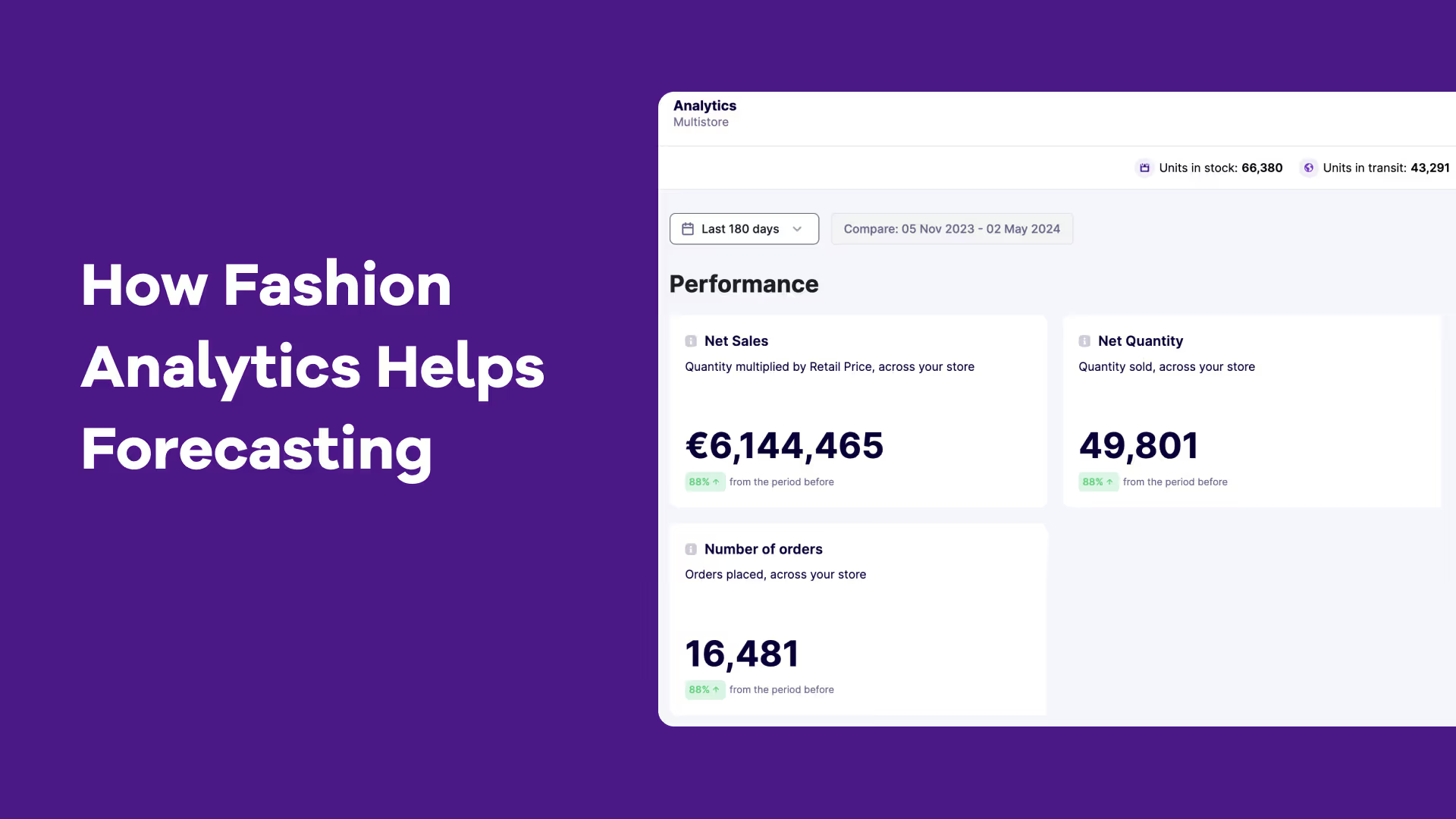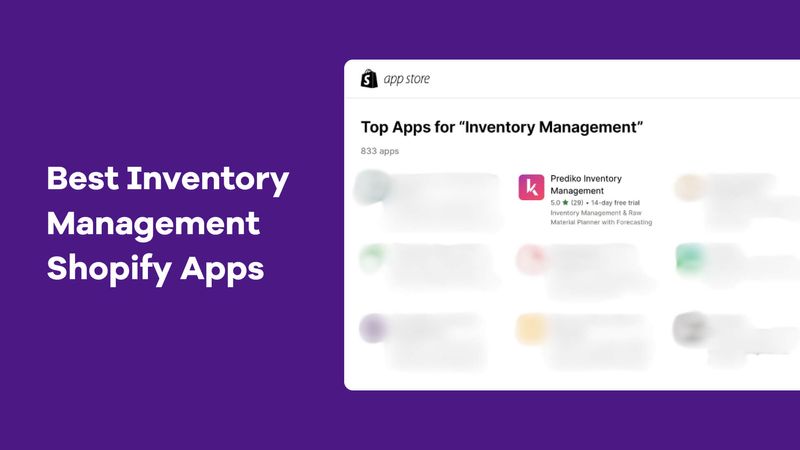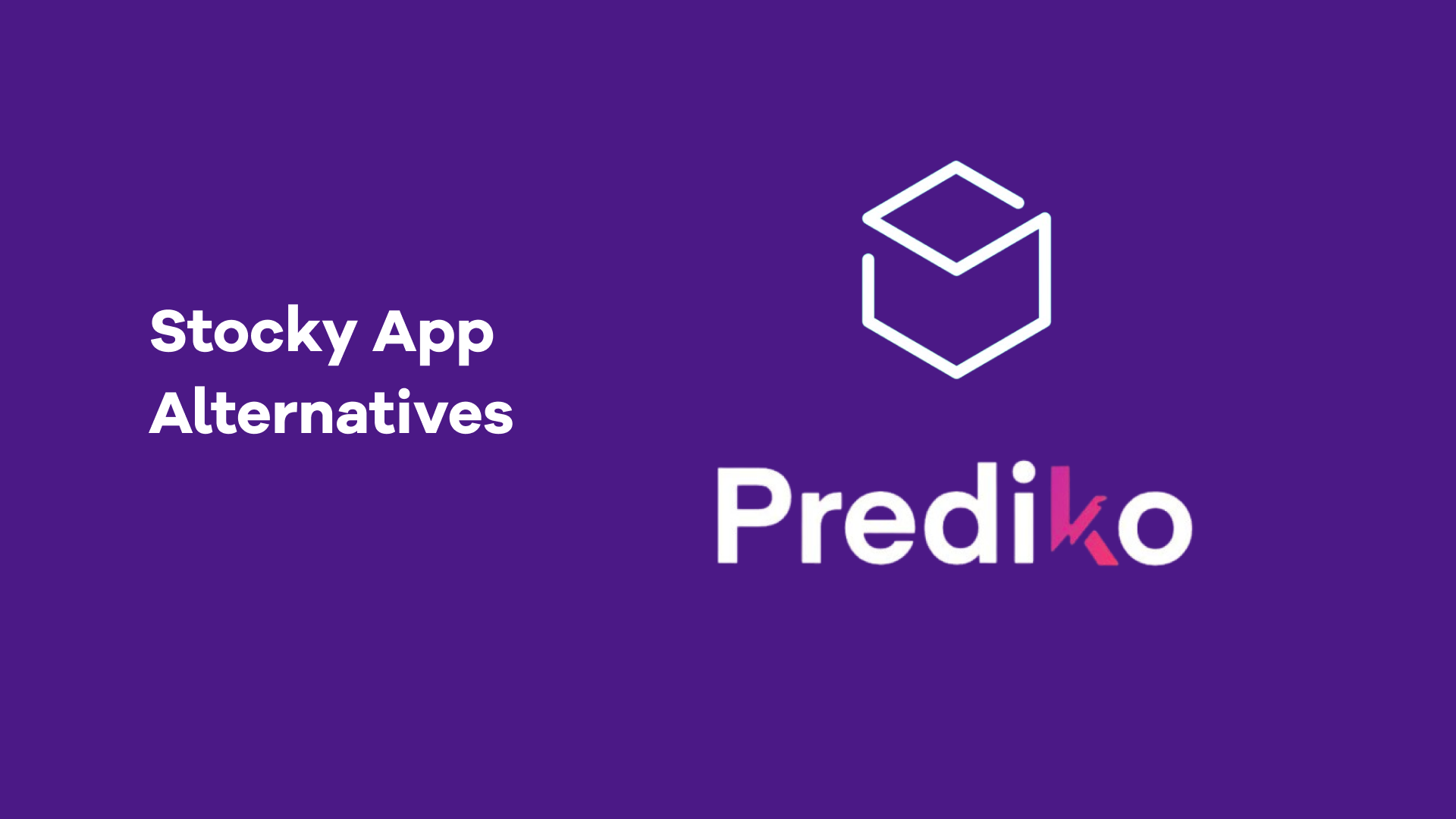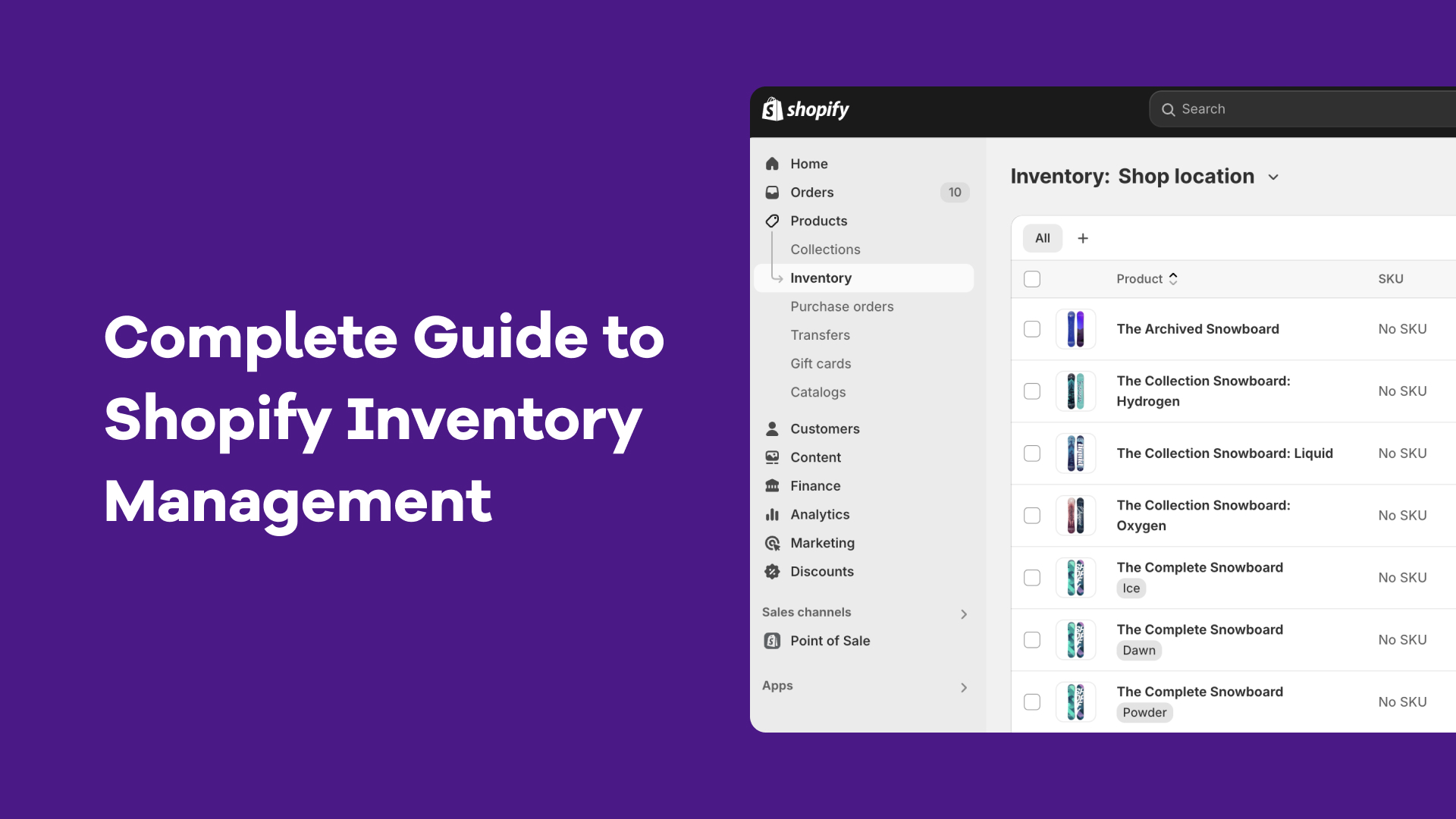The fashion industry is always changing, and so are the processes behind it.
With trends changing in the blink of an eye and volatile shopper preferences, brands need a way to stay prepared. Relying on traditional sales data alone is no longer enough to keep up.
This is where fashion analytics comes into play, transforming raw data into actionable insights.
But fashion analytics isn’t just about tracking past sales to predict future demand. It’s also about using data to account for seasonality, forecast what will sell, when to stock up, and eliminate guesswork from inventory planning.
With the right tool, like Prediko's AI-powered analytics, fashion brands on Shopify can align inventory with real-world demand, reduce costly stock outs or overstocks, and meet customer expectations confidently.
It’s why Prediko is consistently featured among the best Shopify apps for clothing store operators looking to stay inventory-efficient while adapting to fast-changing trends.
We’ll explain the limitations of traditional fashion analytics, the current challenges facing fashion retail, and how advanced fashion analytics can address these issues.
What is Fashion Analytics?
Fashion analytics involves systematic collection, analysis, and interpretation of data relevant to your store and the broader fashion industry. This involves understanding offline and online customer behaviours, tracking sales performances, and identifying upcoming or fading trends. It's an integral part of apparel inventory management.
By drawing conclusions from this data, you can improve everything— from product design to inventory management.
Now, there are four main types of fashion analytics, and each one is important for making informed business decisions.
- Descriptive analytics—Summarizes historical data to explain what has already happened in the business.
This includes analyzing past sales figures, inventory, and customer behaviours to know which products performed well and which did not.
- Diagnostic analytics—Goes a step further by investigating the reasons behind past performance.
It answers questions like "Why did sales drop last quarter?" or "What caused an increase in returns?"
- Predictive analytics—Uses historical data and algorithms to forecast future outcomes.
This helps brands predict demand, allocate inventory, and reduce the risk of overstocking or stockouts.
- Prescriptive analytics—Provides recommendations based on the data analyzed.
It can be anything between stock reordering, pricing decisions, and marketing campaigns.
Traditional Approach to Fashion Analytics
Conventional fashion analytics has a narrow approach, focusing primarily on descriptive analytics and, to some extent, diagnostic analytics.
Its limited focus can slow down brands in keeping pace with today’s fashion market.
Here’s why traditional fashion analytics no longer cut it.
1 Too much reliance on past sales
The constant in fashion is change.
While past data can offer some insights, it rarely accounts for changing consumer preferences, seasonal trends, global events, and promotional activities.
For instance, a fur jacket that sold well last season may not be in demand this season due to shifting trends or the introduction of new bomber jackets.
Such factors can drastically shift demand from last year, making past data unreliable. This shaky foundation may result in excess stock of out-of-style items or missed sales for trending items.
Fashion’s unsold inventory crisis highlights the limits of traditional forecasting Vogue Business reports that brands face billions of dollars in unsold stock every year. AI-driven analytics offer a way out, helping retailers predict demand more accurately and avoid costly overstocks.
2 Non-unified nature
Another challenge of the older approach is its siloed nature. Most times, different departments within a fashion company (design, purchase, sales, and marketing) operate with their own sets of data and tools/sheets, resulting in a fragmented view of the business.
Without a unified analytics dashboard, companies struggle to connect the dots between different data sets, leading to contradictory decisions and an incomplete market understanding.
For example, if the stock-outs triggered by a marketing push don’t reach the supply team, it can lead to lower sales in the next cycle when the campaign ends.
3 Little accountability for other factors like short life cycles, vendor lead times, etc.
Traditional fashion analytics tools often don’t account for important factors influencing sales, such as product life cycles, vendor lead times, and external market conditions.
A trendy item may be out of style or it could lead to missed sales by the time it's restocked because of long lead times.
This is why accurate calculations based on multiple factors need to be done for restocking on time and forecasting customer demand. Older tools and fashion forecasting methods simply fall short in such analysis.
By contrast, modern tools like Prediko apply advanced analytics to consolidate data and provide real-time, multi-factor insights. This allows brands to respond quicker to changing consumer demands and streamline inventory.
For teams aiming to go beyond insights and directly act on them, fashion inventory tools that combine analytics with operational features offer the best of both worlds—visibility and execution.
Current Challenges of Fashion Retail
Operating in the fashion industry brings its unique challenges, and the rise of eCommerce has further added to them.
Below are the primary challenges fashion retailers deal with, and how a customized solution like Prediko addresses them.
1. Quickly changing trends and shorter product life cycles
What used to be four fashion seasons has now evolved into 52 micro-seasons, with trends changing weekly.
Influencer culture and fast fashion have contributed to this greatly, driving demand for immediate, trend-responsive inventory. A style can go viral on TikTok today and fizzle out within weeks.
This rapid turnover rate has shortened the product life cycles. Brands must be agile and responsive to forecast demand for both trendy and non-trendy items accurately.
Otherwise, it leads to overproduction or stockouts. This is why retailers need fashion analytics that accounts for their growth trends in forecasts and helps anticipate shifts in consumer preferences.
Prediko’s algorithm analyzes your historical sales data to identify seasonality and growth trends. It then distributes your revenue and inventory targets across the next 12 months, ensuring you keep up with shifting trends.
2. Supply chain disruptions
Fashion supply chains are complex, involving multiple vendors, manufacturers, and transport routes.
Any disruption—whether due to purchase order delays, raw material shortages, or global events can create a domino effect—delayed order deliveries, stockouts, missed launches, and inventory pile-ups.
Put simply, it affects inventory availability. Fashion brands need a more efficient approach to managing their supply chain in a way that aligns precisely with their customer demand.
Prediko’s inventory management solution solves this by letting you manage everything, from purchase orders and inventory to raw materials on a single dashboard.
It factors in supplier lead times, stock levels, and forecasts to share suggestions for creating purchase orders.
3. Sizing
Sizing inconsistencies across regions (US vs. EU vs. UK) or product lines can be a major challenge for fashion retailers.
Without proper data on customer preferences and body types, brands may end up with too much stock in certain sizes and too little in others.
Plus, retailers striving for inclusivity must stock multiple size ranges as per different demographics and regions—but that doesn’t mean you need to end up with dead stock.
Managing sizing accurately requires insights into purchasing trends, preferences, and geographical differences, so you know which region or store needs more of which size.
Prediko helps brands accurately stock up on sizes that align with the local demand, ensuring balanced inventory across the sizing range.
For example, the Buying Table feature helps you analyze category trends and optimal reorder points - you’ll know exactly what, when, and how much to stock.
4. Dynamic demand for different products
The demand for fashion products can fluctuate quickly, due to celebrity endorsements, fashion events, or seasonal changes.
Products that were once best-sellers may fall out of favor, leaving brands with excess stock or vice-versa.
This makes it challenging for store owners to maintain the right inventory levels at the right times.
Real-time data monitoring and the ability to forecast inventory based on recent trends are important to keep track of dynamic demand shifts.
Prediko shares smart automated nudges for you to restock the right number of units based on your lead times, safety stock, and stock available to meet customer demand.

5. Excess returns
The rate of returns in Fashion is the highest of any industry, at around 30% globally. Customers frequently practice "bracketing"—ordering multiple sizes or colors with the intention of returning most items.
Beyond the direct costs, returns also create inventory management challenges, like reintroducing returned items at off-peak season.
To minimize returns, you can use past data to identify which specific batches or products have a higher return rate and then optimize future inventory decisions like changing the supplier or raw materials.
Role Of Fashion Analytics In Fashion Demand And Inventory Forecasting
Today, with access to large amounts of data, retailers can make informed business decisions to gain a competitive edge in the market. Yet, many retailers still rely on intuition and limited historical data to forecast customer demand and inventory.
Here’s how fashion analytics can change that.
1. Decoding consumer mindset
Descriptive and diagnostic fashion analytics allow you to get inside the minds of your customers. By analyzing historical sales data, you can identify buying patterns and customer preferences.
Choose an analytics tool like Prediko that monitors inventory patterns across different stores or regions for you to understand local preferences and demand fluctuations.
Our AI algorithm also forecasts revenue considering prior seasonal changes and growth trends to help you stock your store accordingly.
2. Unifying business units
Fashion analytics tools play a major role in breaking down the silos that often exist between different departments of a fashion brand. Analytics tools allow retailers to create a single source of truth that consolidates data from planning, production, purchasing, and marketing functions.
This integrated approach enables teams to collaborate and make decisions based on holistic insights rather than isolated data points on different tools/sheets.
Moreover, they can quickly identify and address issues like overstock or stockouts.
For instance, the purchasing team can access real-time inventory data to inform their purchase orders.
3. Improving supply chain efficiency
Fashion analytics combines analysis of historical sales data, consumer behavior, and market trends to create accurate demand forecasts.
By applying predictive analytics, brands can anticipate shifts in fashion preferences and seasonal trends, allowing them to align inventory with actual demand.
With the right tool, you also get a granular view of the entire supply chain, from raw material sourcing to purchase orders. By identifying any issues early on, brands can take steps to optimize operations like switching suppliers if they have long lead times.
Prediko gives you a centralized dashboard to manage current stock, inventory forecasts, purchase orders, and even raw materials, ensuring uninterrupted operations and better control over your supply chain.
4. Personalizing shopping experiences
By analyzing data from past purchases, shopping behaviors, and geographical trends, brands can identify what specific products are popular with certain demographics, regions, or during particular times of the year.
This allows retailers to stock the right products in the right sizes and colors, aligning with the preferences of buyer segments. Using this data, you can also personalize your communications, share recommendations that are more likely to convert, and better plan your marketing campaigns.
For instance, a Canadian storefront may need more outerwear inventory, while the Singapore one may require more summer wear year-round.
5. Automating recommendations and workflows
A fashion analytics tool also offers data-backed recommendations to execute lengthy processes with a click. The tool may suggest precise stock levels and reorder points using historical sales data, customer preferences, and market trends.
It may also automate purchasing processes by generating purchase orders based on real-time data, including lead times and current stock levels. This not only saves time for retailers but also minimizes human error.
Let’s say, there’s a consistent increase in demand for a specific product, the tool can automatically trigger reorder alerts, reducing the risk of stockouts.
Prediko: The Future Of Fashion Analytics
Prediko is a thoughtfully built, AI-powered inventory management solution for fashion retailers looking to optimize stock levels, reduce stockouts, and align with consumer demand. By combining all four types of fashion analytics—descriptive, diagnostic, predictive, and prescriptive—offers a holistic and data-backed approach to fashion inventory management.
Prediko’s powerful features have already helped fashion brands like We Are Jollies and Kate Hewko improve their inventory efficiency and reduce stockouts.
Here’s how Prediko stands out from the competition.
- Comprehensive Inventory Management: Prediko centralizes inventory data across stores, collections, and production stages, offering fashion retailers a clear, end-to-end view of stock movement from design to delivery.
From creating Bills of Materials (BOMs) to ensuring readiness with made-to-stock orders, Prediko centralizes all the channels of inventory management while minimizing overproduction. For teams seeking a purpose-built apparel inventory management software, this level of control and visibility is essential to reduce waste, respond to trends, and grow profitably.
Read Case Study: French lingerie brand We Are Jolies leveraged Prediko’s platform to gain visibility into their entire inventory flow, reducing stock outs by 60% even as they expanded their product range.
- Accurate Demand Forecasting: By analyzing historical sales data, Prediko's AI algorithm forecasts demand by identifying seasonality and growth trends. These insights help set realistic revenue targets for the year and keep purchasing decisions in line with your business goals.
- Real-Time Monitoring and Alerts: With Prediko, retailers can monitor top-performing products, late or due purchase orders, and stock levels in real-time. Detailed metrics, including inventory retail value, give an immediate view into business health, helping stores avoid stockouts or excessive stock.
- Prescriptive Analytics for Efficient Reordering: Prediko keeps you informed with automated email alerts for stockouts (weekly, monthly, and quarterly) and sends smart nudges to purchase the correct amount of stock based on real-time data. Its prescriptive analytics expedite reordering and prevent potential losses due to delayed restocking.
- Buying Table for Better Decisions: Prediko’s Buying Table offers over 90 metrics to help fashion retailers make data-driven decisions with suggestions on what to restock, when, and in what quantities.Its user-friendly interface turns complex data into actionable insights.
- Seamless PO Management: Managing purchase orders also becomes easy with Prediko’s live PO recommendations based on stock cover levels, sell-through rates, and lead times. The purchase order exports and in-app emails provide you with complete control over supplier communications.
Experience the potential of AI-powered fashion analytics with Prediko’s most complete inventory management solution. Start your free 14-day trial or book a demo with our team today.

With the right tool, like Prediko's AI-powered analytics, fashion













